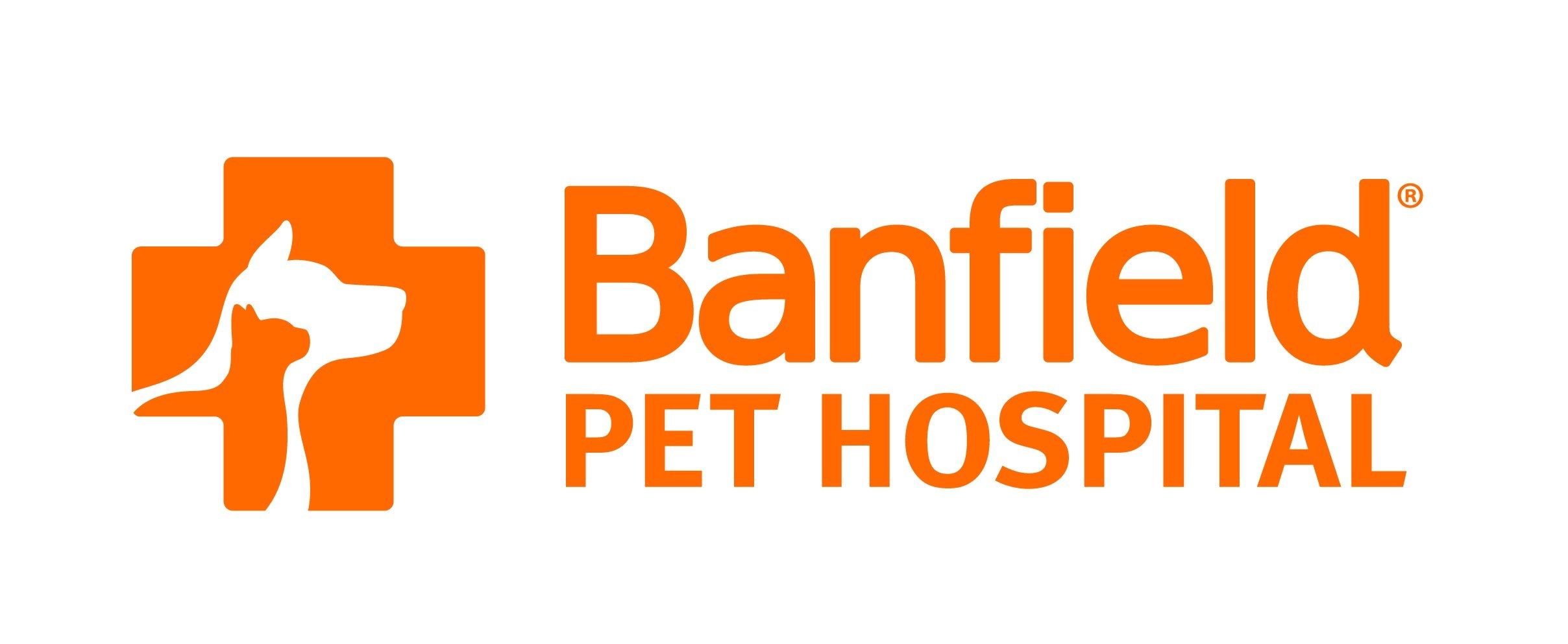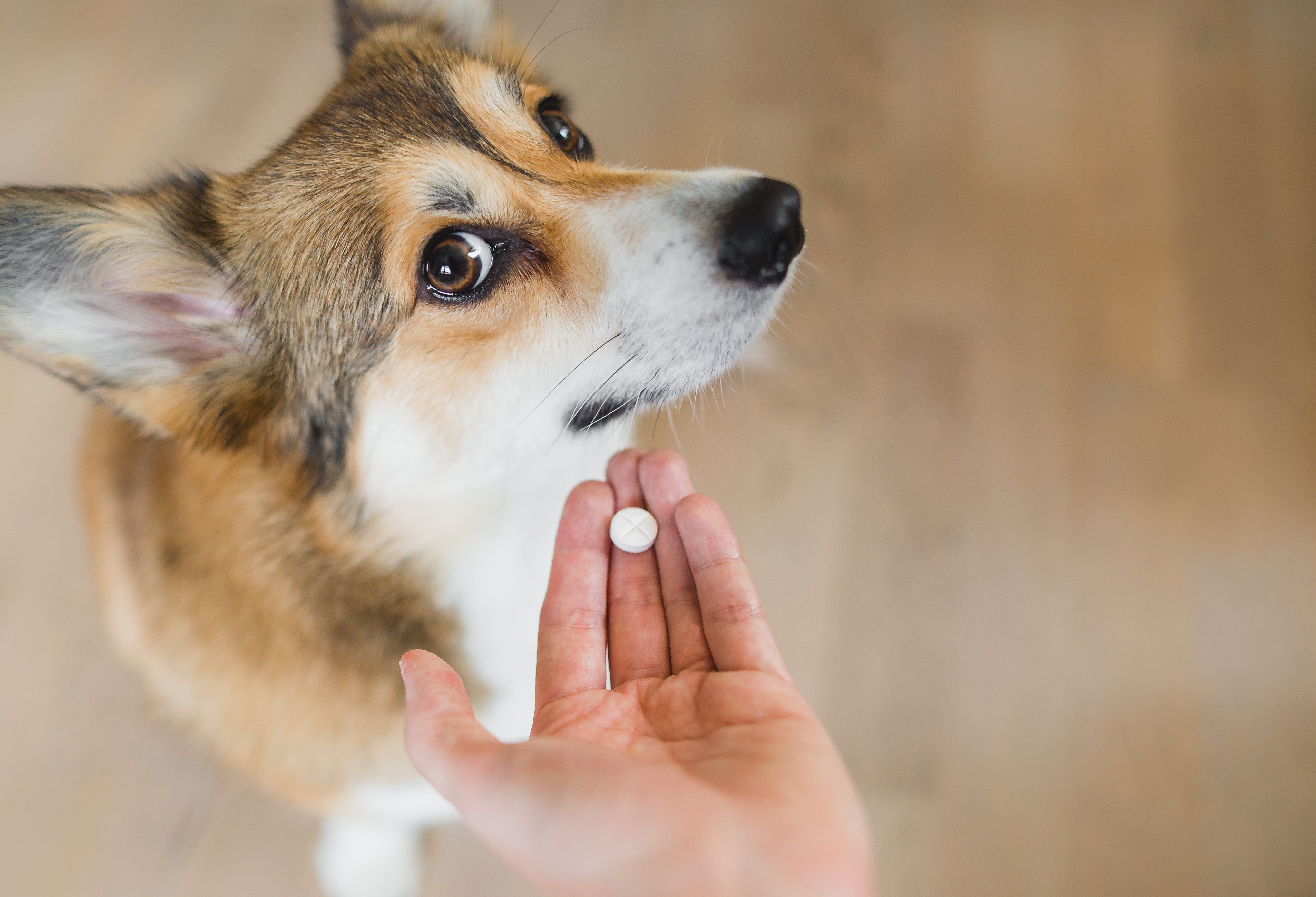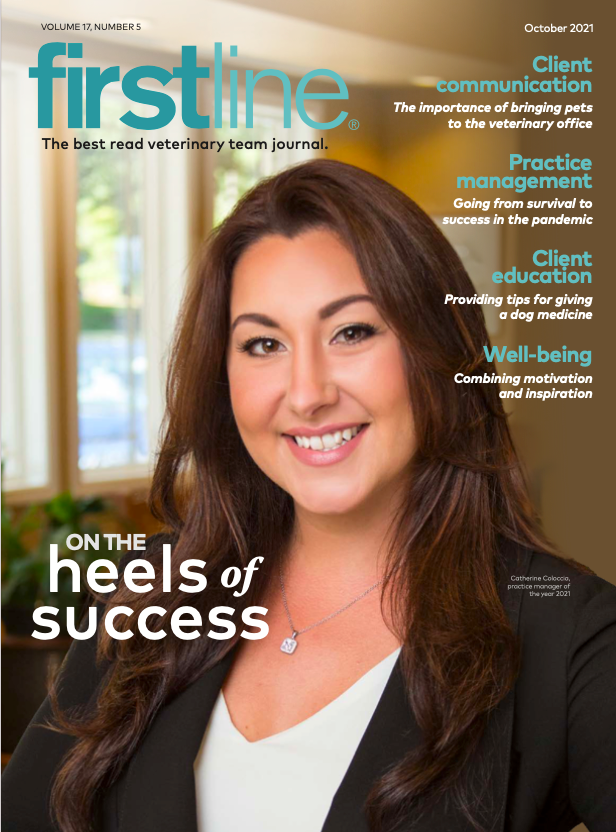Giving a dog medicine can be tricky: Tips for clients to make the process easier
Help clients give their pets the medicine they need without the hassle.
Picture this: A frustrated client comes into your office. Their dog will not take oral medication once a day as required, no matter what they’ve tried at home. What are you going to do? Here are 4 tips to help clients get creative when it comes to delivering nonpalatable, oral medicine.
1. Make it a game
First, encase the pill in a tasty treat, like a small piece of cheese, a cooked meatball, some peanut butter, or a pill pocket. Don’t make it too big. The goal is for the dog to gulp it down, not to chew it. Put this aside and give the dog the same treat without the pill. Then give the dog a second “empty” treat. Now pick up the treat-encased pill and hold it right next to the dog’s nose, but don’t let the dog eat it! Pull it away. For a second time, move it within an inch of the dog’s nose and take it away. Finally, hand the dog the treat-covered pill. After it’s eaten, quickly follow up with a fourth treat without a pill. The hope is for the game and all the treats to be so engrossing that the dog barely notices the pill.
2. Crush it and mix it into food
Mixing crushed medication with food can work if the pill doesn’t have a strong, unpleasant taste. Use soft food with an enticing odor, like a canned diet or cooked, ground meat. Do not mix medication into the pet’s regular diet as this can lead to food refusal if a dog starts associating the bad taste of the medication with their food. It’s not a good idea to crush some types of pills or open certain capsules, so ask a veterinarian before making this recommendation if you are unsure.
3. Use gelatin capsules
Empty gelatin capsules are available through many drug stores. Your client can put less-than-tasty pills inside to hide their flavor while they are in the dog’s mouth.
4. Learn how to physically give a pill
Sometimes your clients don’t have the time or inclination to go through the suggestions above, or perhaps they have tried them all and they haven’t worked. Don’t give up! You can teach your client how we give pills in the veterinary clinic.
It’s easy to safely open a dog’s mouth and drop pills in if you know the tricks of the trade. You can refer owners to a helpful photo series on Washington State University’s website that shows exactly how to do it. Dogs should always get a lot of praise and a treat after a successful pilling session.
Practice makes perfect. Soon your client will wonder why giving pills was once so difficult.
Editors note: All veterinary technician content for this month is supported by Banfield Pet Hospital.


